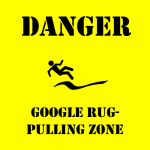 Google will terminate Google+ for individuals in the near future. The service will continue to exist for organizations, which presumably includes what Google calls ‘brand accounts’. But for anyone who bought into Google’s hype about the social media service, this is a major disappointment.
Google will terminate Google+ for individuals in the near future. The service will continue to exist for organizations, which presumably includes what Google calls ‘brand accounts’. But for anyone who bought into Google’s hype about the social media service, this is a major disappointment.
Just ask Mike Elgan, one of the more prolific Google+ contributors. In two recent posts, Mike expresses his profound disappointment with Google’s tendency to create new services, coerce people into using them, and then kill those services. I know all about this, having been a victim of Google’s rug-pulling shenanigans myself.
The rationale for Google’s decision to kill Google+ is the discovery of a huge hole in one of its programming interfaces (APIs). Apparently any developer using this API had access to Google+ user data beyond what was supposedly allowed. Lucky for Google+ users, hardly anyone was using this API, just as hardly anyone was using Google+. Anyway, Google fixed the hole back in March but didn’t tell anyone about it.
Okay, Google. This one doesn’t hurt me very much, as my use of Google+ is limited to parroting posts from my blogs to associated brand accounts. I’ll keep the brand accounts around, but I won’t be expanding my use of them. Fool me once… actually, I’ve lost track of how many times this has happened.
 The release announcement for Chrome 73.0.3683.75 links to a list of sixty security issues which are fixed in the new version.
The release announcement for Chrome 73.0.3683.75 links to a list of sixty security issues which are fixed in the new version. boot13
boot13 Google will terminate Google+ for individuals in the near future. The service will continue to exist for organizations, which presumably includes what Google calls ‘brand accounts’. But for anyone who bought into Google’s hype about the social media service, this is a major disappointment.
Google will terminate Google+ for individuals in the near future. The service will continue to exist for organizations, which presumably includes what Google calls ‘brand accounts’. But for anyone who bought into Google’s hype about the social media service, this is a major disappointment.